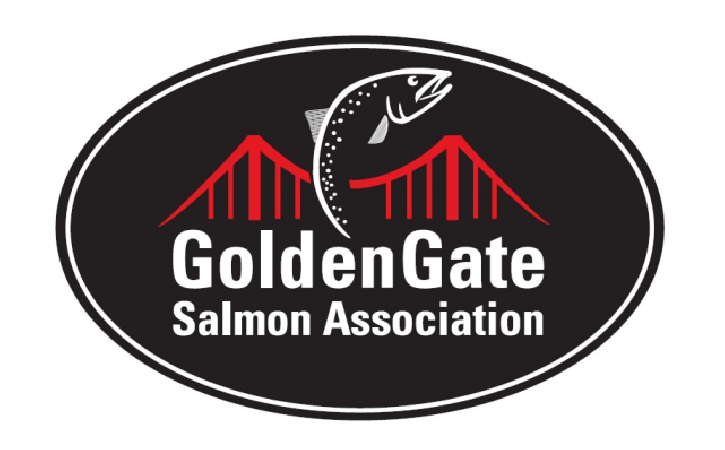Feds Agree with GGSA Call to Truck Millions of Hatchery Salmon
Contingency plans respond to extreme drought conditions
San Francisco -- California's largest salmon hatchery may end up trucking its production this year to the Delta or San Francisco Bay for release due to the extreme drought conditions. Ordinarily the Coleman National Fish Hatchery releases its fish each year into the upper Sacramento River near Redding. From there the baby salmon migrate hundreds of miles downstream to the Delta and, under favorable conditions, on to San Francisco Bay and the Pacific.
Coleman is operated by the U.S. Fish & Wildlife Service (USFWS) and raises approximately 12 million baby salmon annually to help mitigate the impacts of Shasta Dam and federal water operations in the Upper Sacramento River on native salmon stocks. After being presented with overwhelming evidence by the Golden Gate Salmon Association (GGSA -
www.goldengatesalmon.org) , the USFWS has agreed to transport most, if not all, of its 12 million Coleman Hatchery juvenile salmon to the bay or western delta unless expected drought conditions change markedly for the better.
The USFWS made the announcement at a meeting of the Pacific Fisheries Management Council in Sacramento. The Service acknowledged the arguments GGSA has methodically advanced since December that the continued drought presents a uniquely hostile situation that threatens the survivability of Central Valley Chinook salmon, including the hatchery salmon. GGSA maintains that low, clear, hot river conditions will likely wipe out the hatchery fish if they were dumped into the river.
"GGSA worked with the US Fish and Wildlife Service to move these fish rather than dump them into a drought stricken river where they'd most likely perish," said
John McManus, executive director of GGSA. "We're grateful they heard us out and gave this issue the consideration it needs. What this means is we'll likely have a much better salmon fishing season in 2016, when these fish reach adulthood, than we would have otherwise gotten. This could mean the difference between a shutdown of the fishery in 2016 and a decent year."
California's state-operated hatcheries truck much of their production annually for release in the Delta or Bay and the state took a leading role to truck even more this year due to drought impacts on Central Valley rivers. State and federally raised hatchery fish could make up most of 2016's salmon harvest and spawning escapement.
USFWS's plans are contingent on the amount and quality of the water in the Sacramento River when the fish are ready for release in April, May and June. The Service told the PFMC meeting it would take a significant "precipitation event" to reverse the plans to truck their fish. Drought conditions are expected to dominate in the Sacramento River and its tributaries in April, May and June.
"Transporting the baby salmon in tanker trucks and releasing them into the bay or western Delta will give them a fighting chance at reaching the ocean," said GGSA treasurer
Victor Gonella.
In addition to hostile river conditions, baby salmon this year are facing the added risk of being pulled to their deaths through the Delta Cross channel, a manmade canal built to divert water to huge pumps that send it to agriculture. Normally the Cross Channel Gates would be closed to allow salmon passage at this time of year but are now being opened when possible to dilute salt water accumulation in the interior Delta caused by the drought.
"Although the drought is creating extremely hostile conditions this year, many years are low water years and the Fish and Wildlife Service needs to transport salmon whenever low water conditions exist in the future," said GGSA secretary
Dick Pool.
A member of the Pacific Fisheries Management Council reports the Council will be drafting a letter to the USFWS requesting that it consider a similar approach in the future should drought conditions persist or again deteriorate to levels requiring action.
"As more and more fresh water is extracted from the Sacramento River and Delta for delivery to San Joaquin Valley agribusiness, the salmon's migration corridor downstream and through the Bay-Delta estuary has become a deadly gauntlet," said GGSA vice chairman
Zeke Grader who is also the executive director of the Pacific Coast Federation of Fishermen's Associations. "Add drought and the Central Valley rivers and Delta become virtually impassable for salmon."
GGSA was joined by member fishing groups in working to get the Coleman fish trucked. Members of Congress including Representatives
Jared Huffman, Mike Thompson and John Garamendi, Anna Eshoo, Jackie Speier, George Miller and Mike Honda also supported the efforts.
Currently, California's salmon industry is valued at $1.4 billion in economic activity annually and about half that much in economic activity again in Oregon. The industry employs tens of thousands of people from Santa Barbara to northern Oregon. This is a huge economic bloc made up of commercial fishing men and women, recreational anglers (fresh and salt water), fish processors, marinas, coastal communities, fishing guides, equipment manufacturers, the hotel and food industry, tribes, and the salmon fishing industry at large.
The Golden Gate Salmon Association (
www.goldengatesalmon.org) is a coalition of salmon advocates that includes commercial and recreational salmon fishermen, a Native American tribe, businesses, restaurants, fishing guides, environmentalists, families and communities that rely on salmon. GGSA's mission is to protect and restore California's largest salmon producing habitat comprised of the Central Valley rivers that feed the Bay-Delta ecosystem and the communities that rely on salmon.
